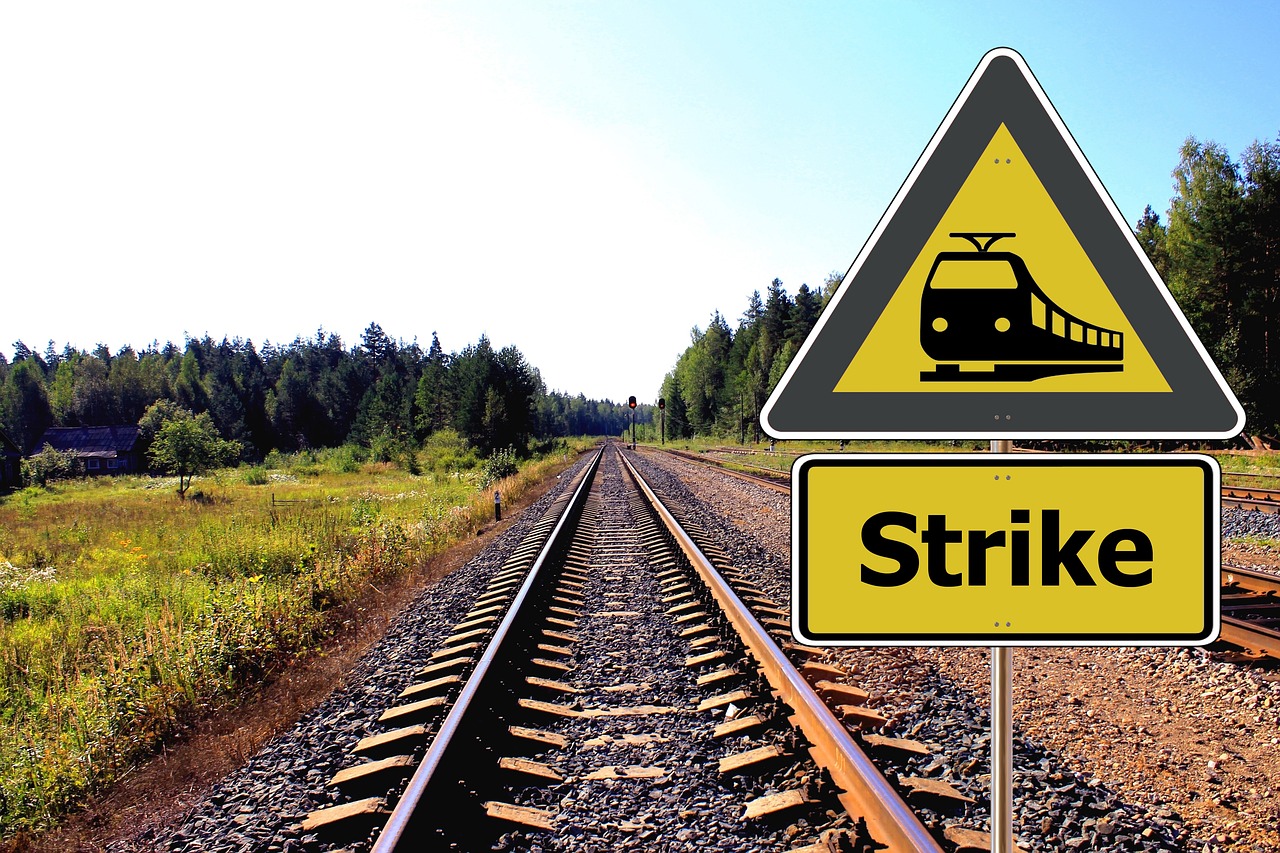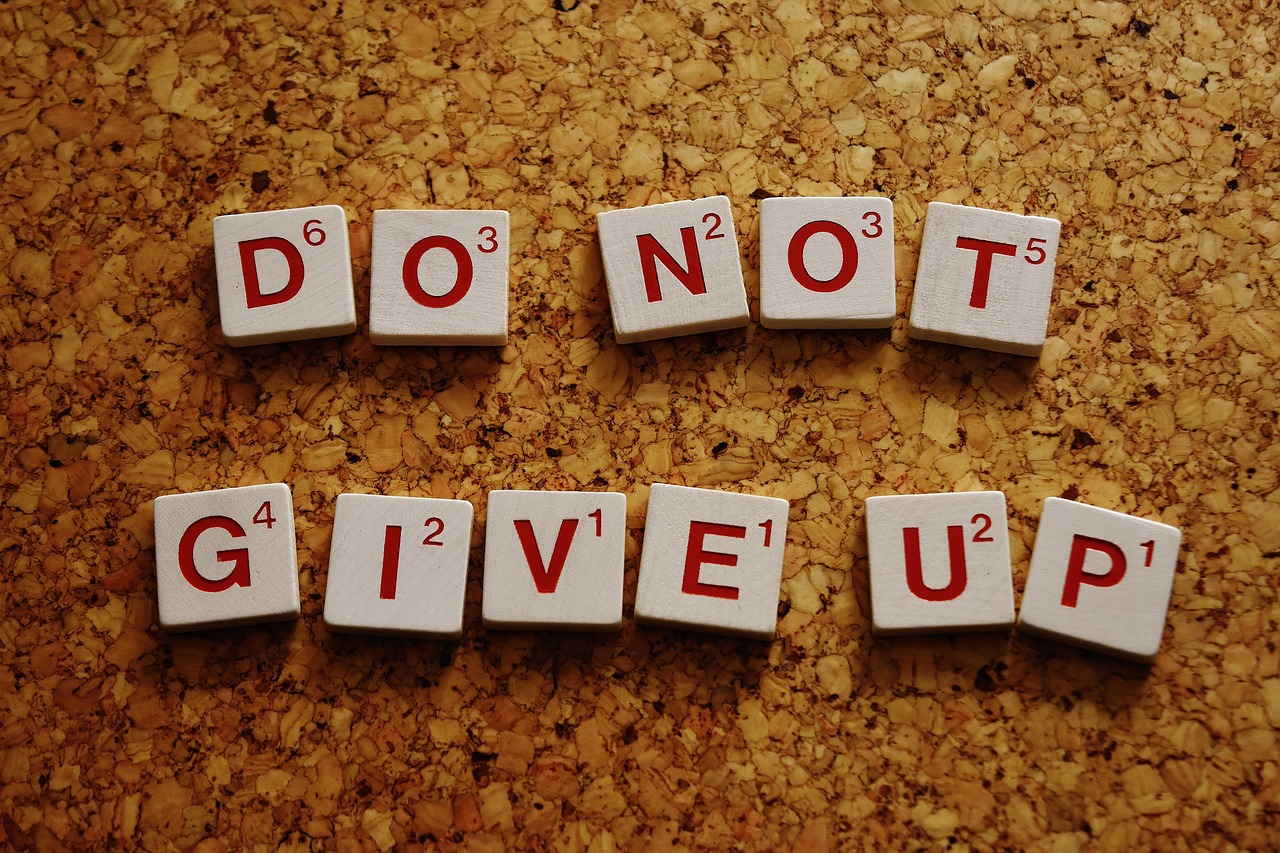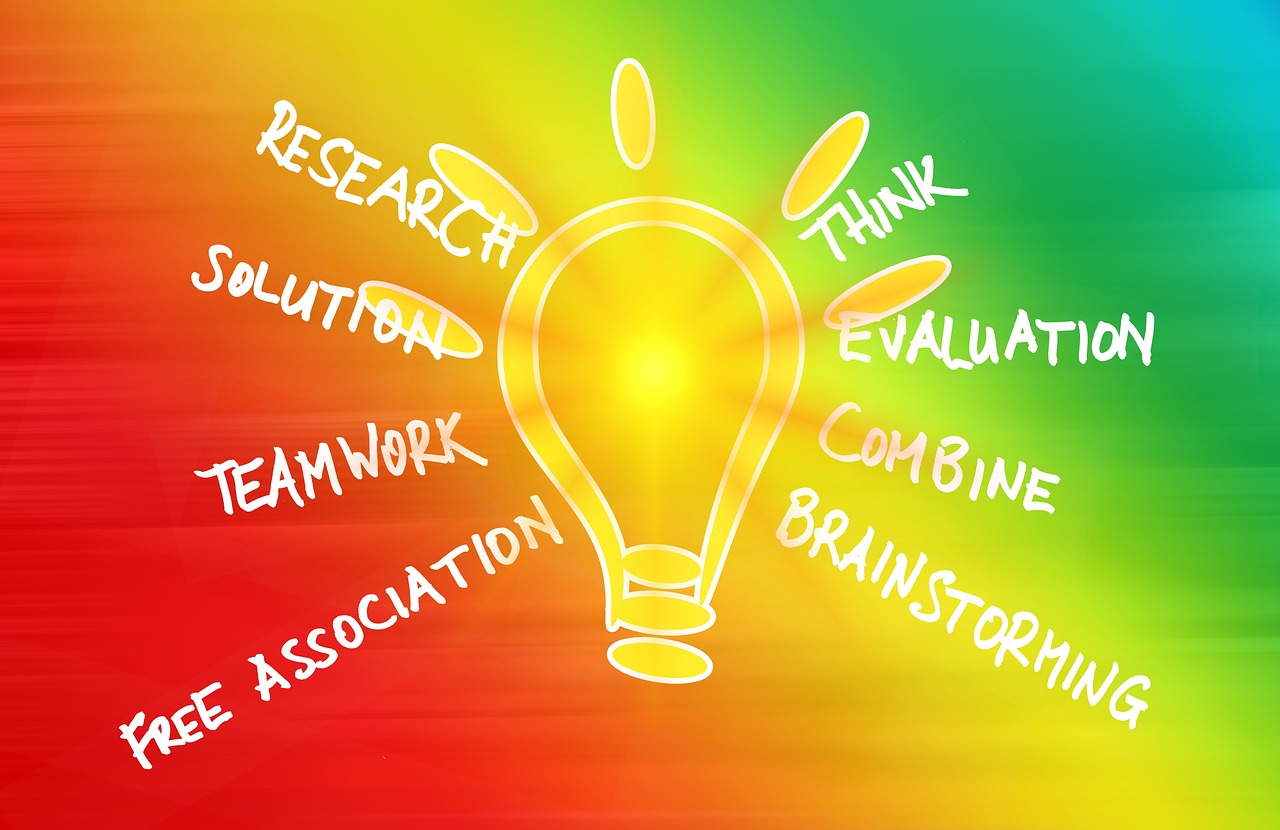The Idea of Collective Consciousness in Social Systems
Have you ever felt that overwhelming sense of belonging when you’re in a crowd, whether at a concert or a protest? That’s the essence of collective consciousness—a fascinating concept that binds individuals together through shared beliefs, values, and emotions. In our increasingly interconnected world, understanding this idea is crucial for grasping how societies function and evolve. Collective consciousness isn't just a theoretical notion; it has profound implications for social behavior, decision-making, and cultural evolution.
At its core, collective consciousness refers to the set of shared beliefs and moral attitudes that operate as a unifying force within a society. Think of it as the social glue that holds us together. This concept goes beyond mere agreement; it encompasses the emotional and psychological connections that shape our identities as members of a community. It’s a bit like the air we breathe—often invisible but essential for our survival as social beings.
Throughout history, collective consciousness has been pivotal in shaping societal norms and cultural practices. From ancient tribes gathering around a fire to modern-day social media movements, the way we connect and share ideas has evolved, but the fundamental concept remains the same. As we delve deeper into this article, we will explore the origins of collective consciousness, its historical context, and how it manifests in contemporary society.
In this digital age, the rapid spread of information can create a shared reality among diverse groups of people, leading to a more pronounced collective consciousness. Social media platforms, for instance, act as amplifiers of collective beliefs, allowing ideas to travel faster than ever before. This interconnectedness can foster unity, but it can also lead to polarization, as differing viewpoints clash in the public arena.
Ultimately, understanding collective consciousness is essential for navigating the complexities of modern social systems. It not only influences how we perceive ourselves and others but also guides our actions and decisions as a society. So, buckle up as we embark on this journey to uncover the layers of collective consciousness and its significant role in shaping our world!
- What is collective consciousness? Collective consciousness refers to the shared beliefs, values, and attitudes that unify a group of individuals within a society.
- How does collective consciousness influence social behavior? It shapes our actions and decisions, guiding how we interact with others and respond to societal issues.
- Can collective consciousness change over time? Yes, collective consciousness evolves as societies grow and adapt to new challenges and cultural shifts.
- What role does technology play in collective consciousness? Technology, especially social media, amplifies collective beliefs and facilitates rapid information sharing, impacting societal norms.

[Definition of Collective Consciousness]
Understanding the term 'collective consciousness' is essential for grasping its role in society. At its core, collective consciousness refers to the set of shared beliefs, ideas, and moral attitudes that operate as a unifying force within a group. Imagine it as the social glue that binds individuals together, creating a sense of belonging and mutual understanding. This concept isn't just a fleeting thought; it has deep roots in sociology and psychology, influencing how communities function and evolve over time.
The notion of collective consciousness can be traced back to the works of early sociologists, but it was Émile Durkheim who brought it to the forefront of social theory. He argued that this shared consciousness is what allows societies to maintain order and cohesion. Think of it like a symphony orchestra: each musician plays their individual part, but it's the collective sound that creates harmony. In this case, the 'music' is the shared values and norms that guide behavior and decision-making within a community.
To further understand this concept, we can break down collective consciousness into several key components:
- Shared Beliefs: These are the fundamental ideas that a group holds in common, shaping their worldview.
- Social Norms: These are the unwritten rules that dictate acceptable behavior within a society.
- Cultural Values: The principles that a community considers important, which influence their actions and priorities.
Collective consciousness is not static; it evolves with time and experience. As societies face new challenges and changes, their collective consciousness adapts, reflecting new realities and beliefs. For instance, the rise of digital technology has significantly impacted how we connect and share ideas, leading to a more globalized collective consciousness. In this digital age, information spreads like wildfire, allowing new ideas to permeate communities and reshape cultural norms almost overnight.
In summary, collective consciousness is a powerful concept that encapsulates the essence of social existence. It serves as a foundation for societal behavior, influencing everything from politics to cultural trends. As we delve deeper into this article, we will explore the historical context, philosophical perspectives, and modern implications of collective consciousness, showcasing its significance in shaping our world.

[Historical Context]
Understanding the historical context of collective consciousness is like peeling back the layers of an onion; each layer reveals deeper insights into how societies operate and evolve. The idea of collective consciousness isn't just a modern phenomenon; it has roots that stretch back through time, influenced by various cultural, political, and social movements. From the early days of human civilization to the present, collective beliefs have shaped the way communities interact, make decisions, and establish norms.
During the Enlightenment era, for instance, the emergence of rational thought and individualism began to challenge traditional collective beliefs. Thinkers like Voltaire and Rousseau questioned the established norms and encouraged people to think critically about their societal roles. This period marked a shift where the collective consciousness began to recognize the importance of individual rights and freedoms, setting the stage for future revolutions.
Fast forward to the Industrial Revolution, and we see another pivotal moment in the evolution of collective consciousness. As people flocked to cities for work, they brought with them their diverse backgrounds, creating a melting pot of ideas and beliefs. This urbanization not only transformed economic structures but also altered social dynamics. The rise of the working class and the labor movement highlighted how collective consciousness could mobilize individuals toward a common cause, leading to significant changes in labor laws and societal structures.
In the 20th century, major events like the World Wars and the Civil Rights Movement further illustrated the power of collective consciousness. The shared experiences of war fostered a sense of unity among nations, while the Civil Rights Movement in the United States showcased how collective action could challenge systemic injustices. People rallied around shared values of equality and justice, demonstrating that when individuals come together with a common purpose, they can enact profound change.
To illustrate this historical journey, the following table summarizes key events that have shaped collective consciousness:
| Time Period | Key Events | Impact on Collective Consciousness |
|---|---|---|
| Enlightenment (17th-18th Century) | Emergence of Rational Thought | Shift towards individualism and questioning of traditional norms |
| Industrial Revolution (18th-19th Century) | Urbanization and Labor Movements | Rise of collective identity among workers |
| 20th Century | World Wars and Civil Rights Movement | Mobilization for common causes, emphasis on equality and justice |
In summary, the historical context of collective consciousness is rich and complex, marked by significant events that have shaped societal beliefs and behaviors. Each era introduced new ideas and challenges that contributed to the evolution of our shared understanding of the world. By examining these historical moments, we can better appreciate how collective consciousness continues to influence our lives today.

[Philosophical Perspectives]
When we dive into the philosophical perspectives surrounding collective consciousness, we uncover a rich tapestry of ideas that have shaped our understanding of society and its shared beliefs. Think of it as a grand conversation that has spanned centuries, involving numerous thinkers who have each added their unique flavor to the mix. From the early musings of philosophers to contemporary theorists, the dialogue around collective consciousness is both profound and, at times, perplexing.
One of the most significant contributions comes from Émile Durkheim, a pioneering sociologist who viewed collective consciousness as the sum of beliefs and sentiments common to the members of a society. Durkheim argued that this shared consciousness is what binds individuals together, creating a sense of belonging and identity. He famously stated that "the totality of beliefs and sentiments common to the average members of a society forms a system which has its own life." This perspective underscores the importance of social norms and values in shaping individual behavior.
On the flip side, we have Carl Jung, who introduced the concept of the collective unconscious. Unlike Durkheim’s focus on societal norms, Jung emphasized the psychological aspects of collective consciousness. He believed that beneath our individual consciousness lies a reservoir of shared memories and archetypes inherited from our ancestors. This collective unconscious influences our thoughts, feelings, and behaviors, often in ways we are not consciously aware of. Jung's ideas suggest that our shared human experiences—myths, dreams, and symbols—connect us in profound ways, transcending time and culture.
Another notable thinker, Georg Wilhelm Friedrich Hegel, approached collective consciousness from a dialectical perspective. He posited that history unfolds through a series of conflicts and resolutions, leading to the evolution of collective thought. Hegel's idea of the World Spirit reflects the collective consciousness of humanity, where each individual contributes to the greater whole. His philosophy implies that our shared beliefs are not static; they evolve through struggle and synthesis, creating a dynamic interplay between individual and collective identities.
Furthermore, Antonio Gramsci introduced the concept of cultural hegemony, which highlights how dominant groups in society shape collective consciousness to maintain power. Gramsci argued that the prevailing ideas of a society are often those of its ruling class, which can lead to a homogenized collective mindset that marginalizes alternative perspectives. This critique serves as a reminder that while collective consciousness can unify, it can also suppress diversity and dissent, raising important questions about whose voices are heard in the collective narrative.
In summary, the philosophical perspectives on collective consciousness reveal a complex interplay between society, culture, and individual psychology. Each thinker contributes a unique lens through which we can understand how shared beliefs shape our world. As we navigate contemporary issues, it is crucial to consider these diverse viewpoints, as they can help illuminate the paths towards a more inclusive and aware collective consciousness.
- What is collective consciousness? Collective consciousness refers to the set of shared beliefs, ideas, and moral attitudes that operate as a unifying force within a society.
- How does collective consciousness influence social behavior? It shapes societal norms and values, guiding individuals' actions and decisions in a way that aligns with the collective mindset.
- Who are the key philosophers associated with collective consciousness? Notable figures include Émile Durkheim, Carl Jung, Georg Wilhelm Friedrich Hegel, and Antonio Gramsci.
- Can collective consciousness evolve? Yes, it evolves over time through cultural shifts, social movements, and historical events, reflecting changes in society's beliefs and values.

[Durkheim's Contributions]
Émile Durkheim, a pioneering figure in sociology, made profound contributions to our understanding of collective consciousness. His work laid the groundwork for examining how societal norms and values shape individual behavior. Durkheim believed that collective consciousness is not merely a collection of individual thoughts but a powerful force that binds society together. He argued that this shared consciousness is crucial for maintaining social order and cohesion.
One of Durkheim's key ideas was the concept of social facts. He defined social facts as the values, cultural norms, and social structures that transcend the individual and exert control over people. This notion highlights how collective consciousness influences behavior, often in ways that individuals may not even recognize. For instance, think about how certain traditions or societal expectations can dictate how we dress, speak, or interact with others. These norms are manifestations of the collective consciousness at work.
Durkheim also explored the role of anomie, a state of normlessness that can occur in rapidly changing societies. He posited that when individuals feel disconnected from their community or when societal norms are unclear, it can lead to feelings of isolation and disorientation. This sense of anomie can erode the collective consciousness, leading to social instability. In this context, Durkheim emphasized the importance of fostering a strong collective consciousness to promote social solidarity and well-being.
To illustrate Durkheim's theories, consider the following table that summarizes his main contributions:
| Concept | Description |
|---|---|
| Social Facts | Values and norms that shape individual actions and maintain societal order. |
| Anomie | A state of normlessness that can lead to social instability and individual disconnection. |
| Collective Consciousness | The shared beliefs and values that unify a society and influence behavior. |
In essence, Durkheim's work provides critical insights into how collective consciousness operates within social systems. His emphasis on the interconnectedness of individuals through shared beliefs and values highlights the importance of understanding the social fabric that holds communities together. By examining these dynamics, we can better appreciate the role of collective consciousness in shaping not just individual actions, but the very structure of society itself.
- What is collective consciousness? Collective consciousness refers to the set of shared beliefs, values, and norms that shape the behavior of individuals within a society.
- How did Durkheim contribute to the concept of collective consciousness? Durkheim introduced key ideas such as social facts and anomie, emphasizing the importance of shared norms in maintaining social order.
- What is the significance of anomie in society? Anomie represents a breakdown of social norms, which can lead to feelings of isolation and instability within a community.
- How does collective consciousness impact social movements? Shared beliefs and values can galvanize individuals to take collective action, driving social change and reform.

[Jung's Collective Unconscious]
When we dive into the realm of collective consciousness, we can't overlook the profound influence of Carl Jung. He introduced the concept of the collective unconscious, which adds an intriguing layer to our understanding of how shared beliefs and experiences shape societies. Unlike the collective consciousness, which is more about the shared ideas and values of a specific group at a given time, Jung's collective unconscious refers to the deeper, inherited reservoir of memories and archetypes that are universal across humanity.
Jung proposed that this collective unconscious is composed of archetypes, which are innate, universal symbols and themes that manifest in our dreams, myths, and art. Think of archetypes as the building blocks of our psyche—like the characters in a story that everyone knows, regardless of their cultural background. For example, the hero, the mother, and the wise old man are archetypes that resonate with people across different cultures and eras. They shape not only individual psyches but also the collective narratives that societies tell about themselves.
To illustrate Jung's ideas, consider how certain themes recur in global mythology. The hero's journey, for instance, is a narrative arc that appears in countless cultures, from the epic tales of Homer in ancient Greece to the modern-day adventures of Harry Potter. This suggests that there is a shared psychological framework that influences how we perceive and respond to the world around us. Jung believed that tapping into this collective unconscious could lead to greater self-awareness and understanding of societal dynamics.
Moreover, Jung's theories highlight the importance of cultural evolution. As societies progress, the collective unconscious evolves, reflecting changes in values, beliefs, and experiences. This evolution can be seen in the way modern media and technology influence our shared narratives. For instance, the rise of social media has created a new platform for collective expression, allowing individuals to share their experiences and connect with others on a global scale. This interconnectedness can amplify certain archetypes, creating a new collective consciousness that is constantly shifting and adapting.
In summary, Jung's concept of the collective unconscious provides a fascinating lens through which to view the interplay between individual and collective identities. It emphasizes that while we may have our unique experiences, there are deeper, shared elements that bind us together as a society. This understanding not only enriches our grasp of collective consciousness but also invites us to explore the profound connections that shape our cultural narratives.
- What is the difference between collective consciousness and collective unconscious?
The collective consciousness refers to the shared beliefs and values of a group at a specific time, while the collective unconscious encompasses the deeper, inherited memories and archetypes that are universal across humanity.
- How do archetypes influence society?
Archetypes shape the narratives we tell and the roles we play in society. They provide a framework for understanding our experiences and can influence cultural norms and values.
- Can collective unconscious change over time?
Yes, as societies evolve, the collective unconscious can also change, reflecting new experiences, values, and beliefs that emerge over time.

[Modern Implications]
In today's fast-paced world, the concept of collective consciousness is more relevant than ever. It serves as a lens through which we can understand the dynamics of modern social interactions and cultural evolution. With the rise of social media and digital communication, the way we share ideas and beliefs has transformed dramatically. Think about it: just a few clicks can ignite a global conversation. This phenomenon allows for rapid dissemination of information, but it also raises questions about the authenticity and depth of these shared beliefs.
One of the most significant modern implications of collective consciousness is its ability to shape public opinion and influence social norms. For instance, movements like #MeToo and Black Lives Matter have harnessed the power of collective consciousness to bring attention to issues that have long been ignored. These movements illustrate how shared experiences and values can mobilize individuals to take action, creating a ripple effect that challenges the status quo.
Moreover, the role of technology cannot be understated. With platforms like Twitter, Facebook, and Instagram, individuals can connect with like-minded people across the globe, creating a digital community that transcends geographical boundaries. This interconnectedness fosters a sense of belonging and shared purpose, but it also presents challenges. As people become more entrenched in their online bubbles, the risk of echo chambers increases. This can lead to a homogenized worldview, where dissenting opinions are drowned out by the loudest voices in the room.
To illustrate this point, consider the following table that highlights the dual nature of collective consciousness in the digital age:
| Positive Impacts | Negative Impacts |
|---|---|
| Enhanced awareness of social issues | Spread of misinformation |
| Mobilization for social change | Polarization of opinions |
| Increased sense of community | Isolation from differing viewpoints |
Additionally, collective consciousness is not just limited to social movements; it also influences consumer behavior and trends. Brands that tap into the collective values of their audience often see greater loyalty and engagement. For example, companies that prioritize sustainability resonate with consumers who share those values, leading to a stronger connection between the brand and its customers.
However, navigating this landscape requires a delicate balance. While collective consciousness can unite people for a common cause, it can also lead to groupthink, where critical thinking is sacrificed for the sake of conformity. This is particularly concerning in political contexts, where the fear of being ostracized can stifle healthy debate and dissent.
In conclusion, the modern implications of collective consciousness are vast and multifaceted. As we continue to engage with one another in increasingly complex ways, understanding this concept becomes crucial for fostering a society that values both unity and diversity. The challenge lies in harnessing the positive aspects of collective consciousness while being mindful of its potential pitfalls. After all, in a world where our thoughts and beliefs can spread like wildfire, we must strive to ensure that the flames we ignite are those of understanding and compassion, rather than division.
- What is collective consciousness? Collective consciousness refers to the shared beliefs, ideas, and moral attitudes that operate as a unifying force within society.
- How does collective consciousness influence social movements? It provides a framework for individuals to connect over shared values, driving them to take collective action for change.
- Can collective consciousness have negative effects? Yes, it can lead to groupthink and echo chambers, which may stifle dissenting opinions and critical thinking.
- What role does technology play in modern collective consciousness? Technology enables rapid information sharing and connection among individuals, but it can also create polarized communities.

[Role in Social Movements]
The concept of collective consciousness is pivotal when examining the dynamics of social movements. At its core, collective consciousness refers to the shared beliefs, values, and attitudes that bind a group of people together. This interconnectedness fosters a sense of unity and purpose, which is essential for any social movement aiming to enact change. Imagine a group of people standing together, their voices merging into a powerful chorus—this is the essence of collective consciousness in action. It transforms individual frustrations into a collective roar, driving the momentum needed for social change.
Social movements often emerge from a backdrop of shared grievances and aspirations. When individuals identify with a cause, they tap into a larger narrative that resonates with their experiences. This shared understanding can be likened to the roots of a tree; each person is a branch, but together they form a robust and interconnected system. The strength of this network is what allows movements to gain traction and visibility. For instance, consider the civil rights movement in the United States during the 1960s. Activists rallied around the collective belief in equality and justice, creating a powerful force that challenged systemic racism.
Moreover, collective consciousness can be seen as a catalyst for mobilization. When people feel that they are part of a larger community, they are more likely to take action. This phenomenon can be illustrated through various social movements, such as environmental activism, where individuals come together to advocate for the planet. The urgency of climate change has ignited a collective awareness that transcends borders, uniting people across the globe in a shared mission. This unity is crucial; it not only amplifies voices but also creates a sense of belonging and responsibility among participants.
However, it's essential to acknowledge that collective consciousness is not without its challenges. While it can serve as a unifying force, it can also lead to the exclusion of dissenting voices within a movement. This phenomenon is often referred to as "groupthink," where the desire for harmony and conformity can stifle individual creativity and critical thinking. For example, within certain activist groups, there may be pressure to adhere strictly to a set of beliefs, potentially alienating those who have different perspectives. This highlights the delicate balance that movements must maintain between unity and diversity of thought.
As we analyze the role of collective consciousness in social movements, we can draw insights from historical and contemporary examples. The #MeToo movement, which gained significant traction in recent years, exemplifies how collective awareness can lead to profound societal shifts. By sharing personal experiences of harassment and abuse, individuals contributed to a larger narrative that challenged the status quo. This movement not only raised awareness but also prompted legislative changes and cultural shifts regarding gender equality.
In conclusion, the role of collective consciousness in social movements is multifaceted and dynamic. It serves as both a unifying force that propels individuals toward collective action and a potential source of conflict when differing opinions arise. Understanding this duality is crucial for anyone interested in the mechanics of social change. As we move forward, it's vital to foster an environment where diverse voices can contribute to the collective narrative, ensuring that movements remain inclusive and reflective of the society they aim to transform.
- What is collective consciousness? Collective consciousness refers to the shared beliefs and attitudes that shape a group's identity and actions.
- How does collective consciousness influence social movements? It creates a sense of unity and purpose, motivating individuals to act together for a common cause.
- Can collective consciousness lead to negative outcomes? Yes, it can result in groupthink, where dissenting opinions are stifled, potentially hindering progress.
- What are some examples of social movements influenced by collective consciousness? The civil rights movement and the #MeToo movement are notable examples where collective consciousness played a significant role.

[Case Studies]
To truly grasp the power of collective consciousness, examining real-world examples can be incredibly enlightening. These case studies not only showcase how shared beliefs can mobilize communities but also illustrate the transformative impact of collective action on society. One notable example is the Civil Rights Movement in the United States during the 1960s. This movement was fueled by a collective desire for equality and justice, uniting people from diverse backgrounds under a common banner. The shared experiences of discrimination and the dream of a better future galvanized individuals to stand together, leading to monumental changes in legislation and societal norms.
Another compelling case study is the Arab Spring, which began in late 2010. This series of anti-government protests across the Arab world was sparked by a collective consciousness among the populace, fueled by social media and a shared frustration with oppressive regimes. The movement demonstrated how quickly collective beliefs could mobilize thousands, leading to significant political upheaval in countries like Tunisia, Egypt, and Libya. The role of technology in amplifying these shared sentiments cannot be overstated, as platforms like Twitter and Facebook provided a space for individuals to connect and organize.
Additionally, we can look at the #MeToo Movement, which began as a social media hashtag and evolved into a global phenomenon. This movement highlighted the collective consciousness surrounding sexual harassment and assault, uniting voices from various backgrounds to demand accountability and change. It showcased how shared experiences could transcend individual stories, creating a powerful narrative that resonated with millions. The impact of #MeToo has led to significant discussions about workplace culture, consent, and gender equality, proving that collective consciousness can drive societal change.
In examining these case studies, it's crucial to recognize the patterns that emerge. Each instance illustrates how collective consciousness can:
- Unite individuals towards a common goal
- Facilitate social and political change
- Utilize technology as a catalyst for mobilization
However, it's essential to acknowledge that while collective consciousness can be a force for good, it can also lead to challenges, such as groupthink or the suppression of dissenting voices. The power of collective beliefs is a double-edged sword, and understanding its nuances is vital for navigating the complexities of social movements.
Q1: What is collective consciousness?
A1: Collective consciousness refers to the set of shared beliefs, ideas, and moral attitudes that operate as a unifying force within society. It shapes how communities think and act, influencing everything from cultural norms to social movements.
Q2: How does collective consciousness influence social change?
A2: Collective consciousness can drive social change by uniting individuals around common goals, facilitating collective action, and fostering a shared understanding of societal issues. When people come together with a shared purpose, they can create significant shifts in policies and cultural norms.
Q3: Can collective consciousness have negative effects?
A3: Yes, while collective consciousness can promote unity and progress, it can also lead to negative outcomes such as groupthink, where dissenting opinions are suppressed, or the perpetuation of harmful ideologies. It's important to maintain a balance between collective beliefs and individual critical thinking.
Q4: How has technology impacted collective consciousness?
A4: Technology has drastically changed how collective consciousness is formed and expressed. Social media platforms enable rapid dissemination of ideas and facilitate connections among like-minded individuals, allowing movements to gain momentum quickly and reach a global audience.

[Challenges and Critiques]
While the concept of collective consciousness is often celebrated for its ability to unite individuals under shared beliefs and values, it is not without its challenges and critiques. One of the primary concerns is the potential for a homogenized mindset. When a group of people subscribes to a common set of beliefs, there is a risk that dissenting voices may be silenced or marginalized. This phenomenon can lead to a lack of critical thinking and an echo chamber effect, where only similar ideas are reinforced, stifling innovation and diversity of thought.
Moreover, the pressure to conform to a collective consciousness can be overwhelming. Individuals might feel compelled to align their opinions with the majority, even if they personally disagree. This can create an environment where authenticity is compromised, leading to a society that values consensus over individuality. This dynamic can be particularly detrimental in social movements, where the strength of the cause may overshadow personal convictions, causing people to rally behind a banner that doesn't truly represent their beliefs.
Another significant critique revolves around the idea that collective consciousness can sometimes lead to groupthink. This psychological phenomenon occurs when the desire for harmony in a group results in irrational or dysfunctional decision-making. When individuals prioritize consensus over critical analysis, the group may overlook alternative perspectives and viable solutions. The consequences of groupthink can be severe, as seen in historical events where collective decisions led to disastrous outcomes.
Additionally, the rise of social media has complicated the landscape of collective consciousness. While these platforms can facilitate the rapid spread of ideas, they can also amplify misinformation and polarize communities. The viral nature of content on social media can distort the collective consciousness, as sensationalized or misleading information can quickly become accepted as truth. This raises questions about the integrity of shared beliefs and whether they are genuinely reflective of a community's values or merely a product of algorithm-driven engagement.
In light of these challenges, it is crucial to foster a culture that encourages critical dialogue and embraces diversity. By valuing individual perspectives and promoting open discussions, society can mitigate the risks associated with a homogenized collective consciousness. This approach not only enriches the collective experience but also nurtures a more resilient and adaptive social fabric.
As we navigate the complexities of collective consciousness in today's world, it is essential to remain vigilant about the potential pitfalls while celebrating the power of shared beliefs to drive positive change. Balancing unity with individuality may be the key to harnessing the full potential of collective consciousness without falling prey to its inherent challenges.
- What is collective consciousness?
Collective consciousness refers to the set of shared beliefs, ideas, and moral attitudes that operate as a unifying force within a society.
- How does collective consciousness affect social movements?
It plays a crucial role by aligning individuals around common goals and values, which can mobilize collective action for social change.
- What are the downsides of collective consciousness?
Potential downsides include groupthink, suppression of dissenting opinions, and the risk of misinformation spreading through social media.
- Can collective consciousness evolve?
Yes, it evolves as societal values and beliefs change over time, often influenced by cultural, technological, and global factors.

[Future of Collective Consciousness]
The future of collective consciousness is a fascinating topic that intertwines with the rapid changes in our social, technological, and cultural landscapes. As we move further into the 21st century, the dynamics of collective consciousness are evolving at an unprecedented pace. With the rise of digital communication and social media, our ability to share ideas and beliefs has never been easier, but this also raises questions about the quality and authenticity of those shared experiences. Will we see a more unified global consciousness, or will fragmentation become the norm?
One of the most significant influences on the future of collective consciousness is technology. The advent of the internet and social media platforms has created a new realm where ideas can spread like wildfire. Just think about it: a single tweet can spark a global movement! However, this immediacy can also lead to misinformation and echo chambers, where only similar views are amplified, drowning out diverse perspectives. This duality presents a challenge for the collective consciousness—how do we ensure that our shared beliefs are grounded in truth and inclusivity?
Moreover, as we navigate through globalization, cultural exchanges are becoming more prevalent. This blending of traditions and beliefs can enrich our collective consciousness, leading to a more diverse and inclusive society. However, it can also result in the dilution of unique cultural identities. The question arises: can we maintain our individuality while embracing a collective identity? The balance between unity and diversity will be crucial in shaping the future of our shared consciousness.
Additionally, the impact of artificial intelligence (AI) and machine learning cannot be overlooked. As AI systems become more integrated into our daily lives, they will influence how we perceive and interact with information. Imagine a future where algorithms curate our news feeds, tailoring our reality based on our past behaviors. While this could enhance personalization, it also risks creating a homogenized consciousness that lacks critical engagement and diverse viewpoints. How do we navigate this potential pitfall while harnessing the benefits of technology?
To illustrate these points, consider the following table that outlines some potential scenarios for the future of collective consciousness:
| Scenario | Potential Impact |
|---|---|
| Increased Global Connectivity | Enhanced collaboration and understanding across cultures. |
| Rise of Echo Chambers | Polarization of beliefs and reduced critical discourse. |
| AI-Driven Information Curation | Personalized experiences but risk of homogenization. |
| Cultural Blending | Enrichment of collective identity but potential loss of uniqueness. |
In conclusion, the future of collective consciousness is a complex interplay of technology, culture, and social dynamics. As we steer through these changes, it’s vital to foster an environment that encourages critical thinking, diversity, and authenticity in our shared beliefs. By doing so, we can cultivate a collective consciousness that is not only reflective of our interconnected world but also respectful of our individual identities.
- What is collective consciousness? Collective consciousness refers to the set of shared beliefs, ideas, and moral attitudes that operate as a unifying force within society.
- How does technology influence collective consciousness? Technology facilitates the rapid spread of ideas and beliefs, but it can also create echo chambers and misinformation.
- Can collective consciousness evolve? Yes, collective consciousness evolves with societal changes, cultural interactions, and advancements in technology.
- What are the challenges facing collective consciousness? Challenges include polarization, misinformation, and the risk of losing unique cultural identities amid globalization.
Frequently Asked Questions
- What is collective consciousness?
Collective consciousness refers to the set of shared beliefs, ideas, and moral attitudes that operate as a unifying force within society. It's like the invisible thread that connects us all, influencing our behaviors, decisions, and cultural norms.
- How does collective consciousness influence social behavior?
It shapes how groups interact and make decisions. Think of it as the social glue that holds communities together, guiding everything from everyday interactions to large-scale movements. When people share a common understanding, they are more likely to act in concert towards a goal.
- What role did historical events play in shaping collective consciousness?
Historical events, such as wars, revolutions, and social movements, have profoundly influenced collective beliefs. For instance, the civil rights movement in the 1960s united diverse groups under a shared goal of equality, altering societal norms and expectations.
- Who are some key philosophers associated with collective consciousness?
Notable philosophers include Émile Durkheim, who emphasized the importance of social cohesion, and Carl Jung, who introduced the concept of the collective unconscious. Their ideas help us understand how collective consciousness operates on both social and psychological levels.
- What are the modern implications of collective consciousness?
In today's world, collective consciousness manifests through social media, global movements, and cultural trends. It can rapidly mobilize people around causes, but it can also lead to echo chambers where dissenting voices are drowned out.
- How does collective consciousness drive social movements?
Shared beliefs and values are essential for social movements. When individuals recognize their common struggles and aspirations, they can unite to advocate for change, as seen in movements like Black Lives Matter and climate activism.
- What are some challenges associated with collective consciousness?
While it can foster unity, collective consciousness can also lead to conformity, suppressing individual thought and diversity. It’s crucial to balance collective beliefs with personal perspectives to avoid a homogenized mindset.
- What does the future hold for collective consciousness?
As technology and globalization continue to evolve, so will collective consciousness. We may see a more interconnected global society, but this could also lead to increased polarization if differing beliefs clash more frequently.



















